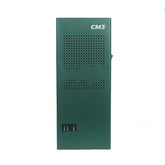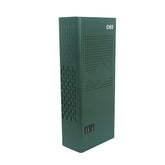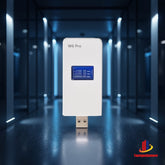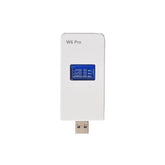Shielding Lesson - How to Choose a Signal Jammer
Worried about incomplete shielding? A complex signal environment and a limited budget? Worried about damage and a short device lifespan? Want to block only one signal but worry about affecting other frequency bands? Worried about being discovered by others? Worried about the jammer's appearance and impacting the indoor environment?
Mobile phone signal jammers are designed to effectively avoid and interfere with mobile phone-related signals, such as GPS, Wi-Fi, 2G, 3G, 4G, and future 5G. They are primarily used in school exam halls, prisons, and detention centers to ensure fairness and impartiality in exams, such as the middle school entrance exam, the college entrance exam, and regular mock exams.
So how should you choose a signal jammer? From a manufacturer's perspective, choosing the wrong one can easily result in product returns or ineffectiveness.
First, appearance isn't particularly important for jammers; it's just the structural differences that make them different. Based on their appearance, signal jammers can be categorized as those with external or internal antennas. External antennas, because they extend outward, take up slightly more space than internal antennas. This outward extension also makes them more stable.
Second, the power of the jammer: The typical power range is 3W-480W. Jammers are generally categorized as low-power, medium-power, and high-power, ranging from 3W-100W. High-power signal jammers are generally not recommended, as they can severely interfere with base station signal transmission and pose a certain degree of radiation risk to the human body. For exams, school, and judicial examinations, medium-power jammers are recommended.
Third, the power supply: Handheld jammers have built-in lithium batteries, which can be recharged with a power adapter. Desktop jammers use 220V power, while in-car jammers typically use 12-36V power.
Fourth, the location of use: For indoor use, low-power signal jammers are generally suitable for exam rooms, conference rooms, offices, and other spaces. Gas stations require explosion-proof and high-temperature-resistant ones. For outdoor use, high-power signal jammers are required to achieve the appropriate distance. This is especially true for applications with certain wall penetration requirements.
Fifth, regarding frequency requirements, commonly known as 2G, 3G, and 4G: Before purchasing, you need to know which signals you want to block. Standard mobile phone signals (2, 3, and 4G) can be selectively blocked. If you only want to block 2, 3, or 3, 4G, this can be adjusted at the factory. There are also frequency bands such as 2.4G WiFi and 5.8G WiFi. Generally, common signals can be quickly blocked.














